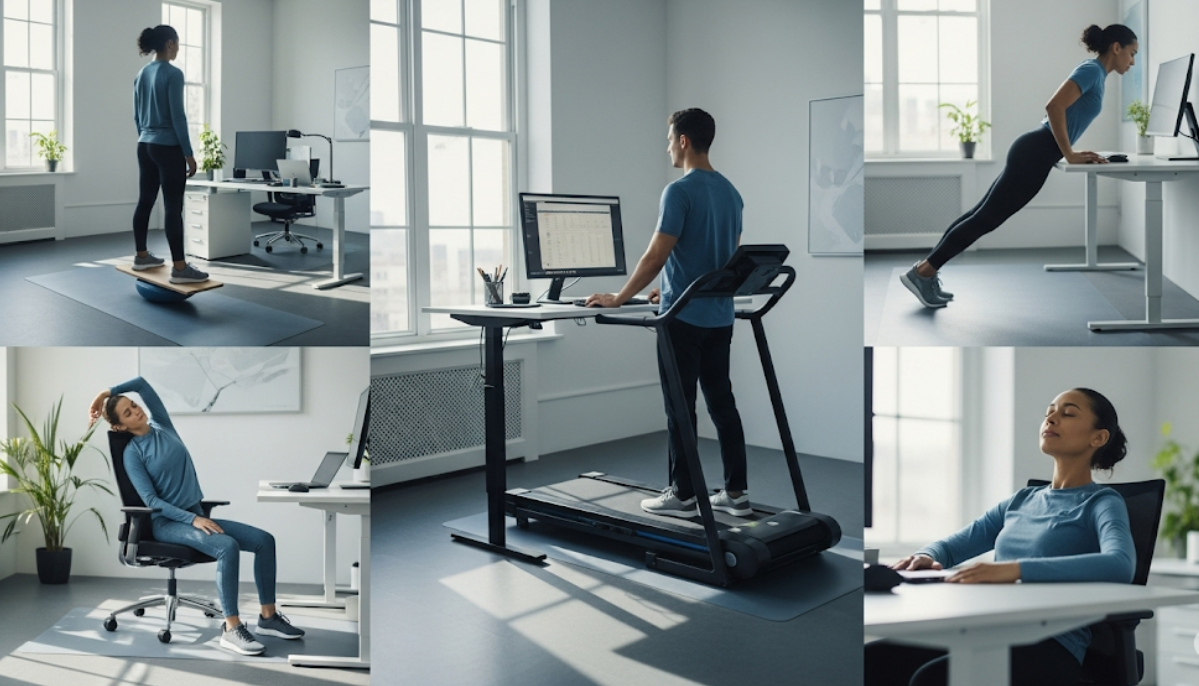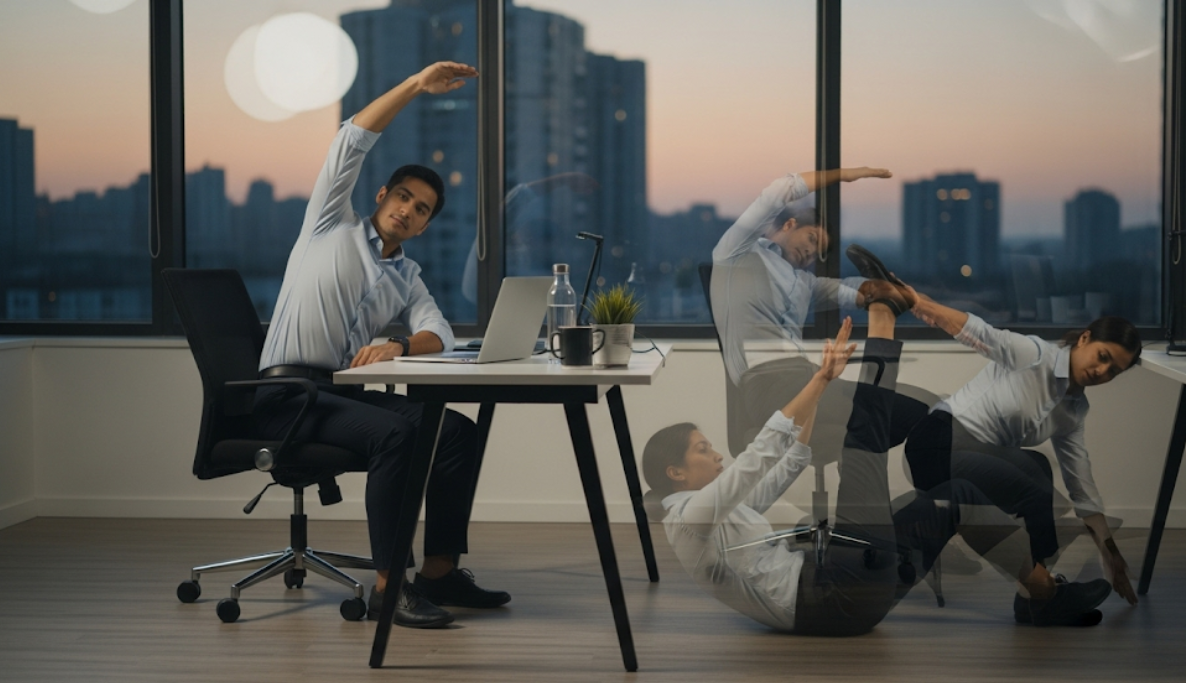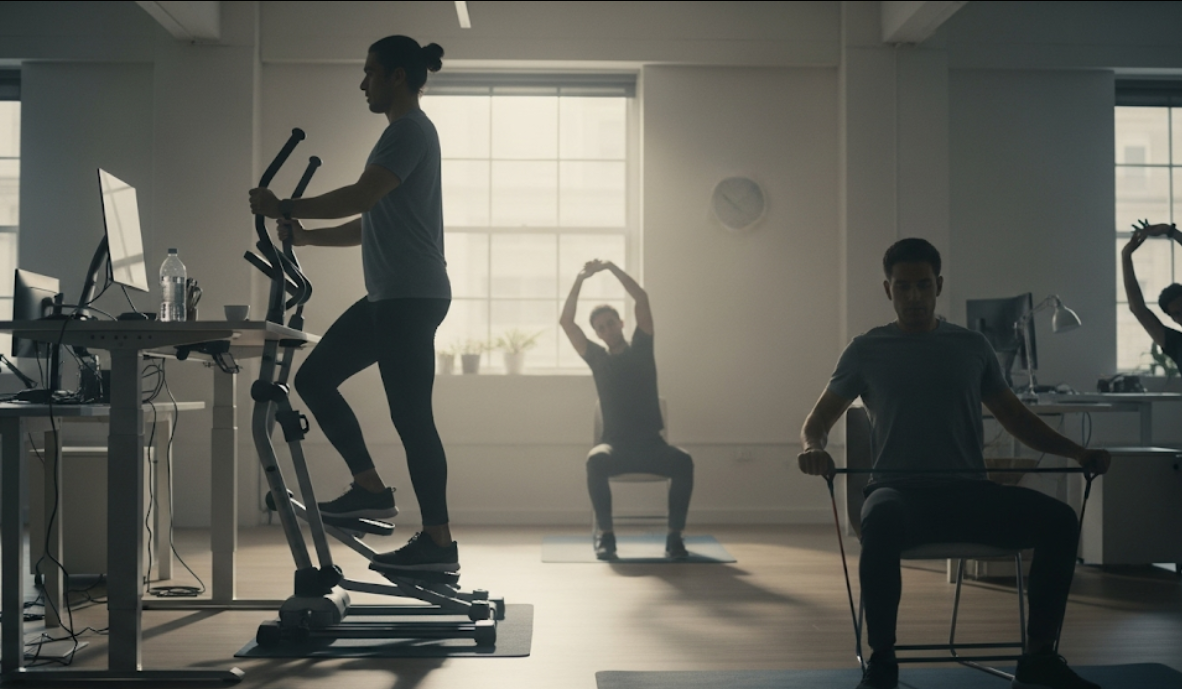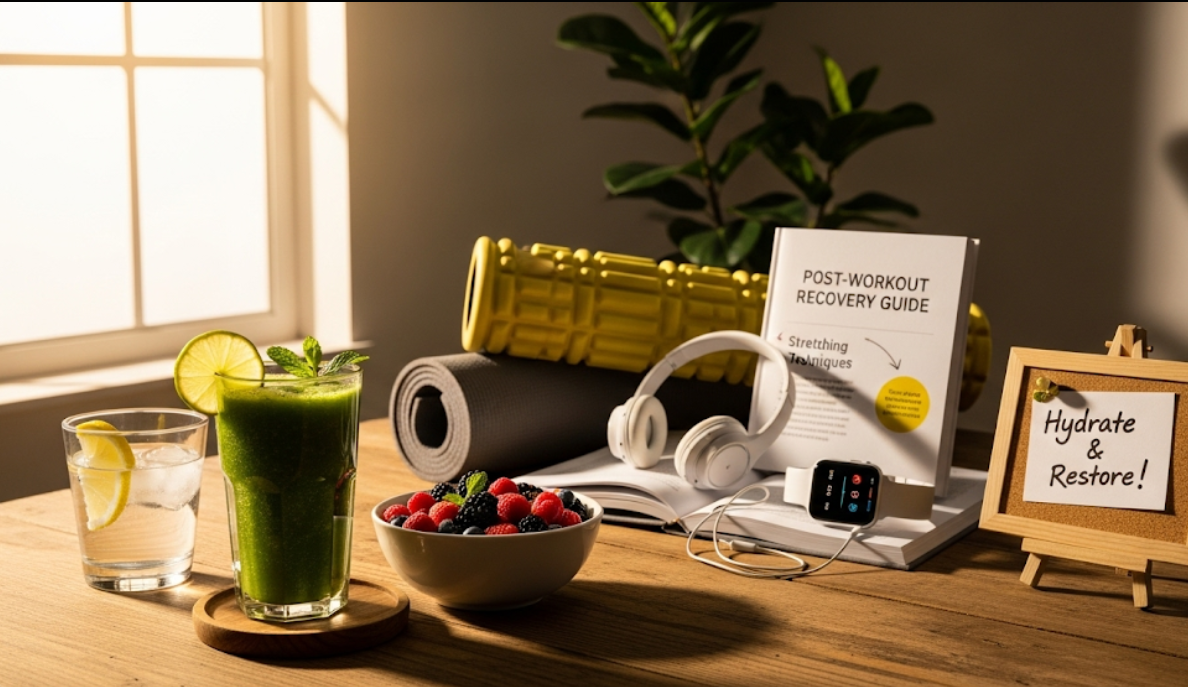Sitting at a desk for hours might seem harmless, but over time, it can quietly drain your energy, slow down your metabolism, and even cause back pain. The truth is, most office jobs aren’t designed with movement in mind, yet our bodies are. Staying active during desk work doesn’t require a full gym setup—it’s more about small, smart changes. Let’s go through ten practical ways you can sneak activity into your workday without looking out of place.
Take mini stretch breaks
Every 30–45 minutes, give your body a quick reset. You don’t need to make it obvious; even rolling your shoulders, stretching your arms overhead, or standing for 30 seconds does wonders. This prevents stiffness and keeps blood circulating. If you tend to forget, set a small timer or use a reminder app. Trust me, your back and neck will thank you later.
Try desk exercises
It might sound unusual, but desk exercises are real and surprisingly effective. Things like seated leg lifts, ankle rolls, or squeezing your glutes while typing are simple yet effective ways to activate muscles. For instance, under your desk, lift each leg one at a time and hold for 10 seconds. Repeat this a few times—it’s like a secret workout no one notices.
Use the stairs whenever possible
Elevators save time, but stairs build strength and burn calories. Even if your office is on a high floor, you can mix it up: take the elevator halfway and climb the rest. Over a week, these steps add up more than you think. Plus, it gives your heart a mini cardio session, which sitting never will.
Walk during calls or meetings
Most phone calls don’t require you to be chained to your chair. Whenever possible, stand up or walk around while talking. If you have wireless earbuds, even better—you can pace the hallway or circle your office. It’s a simple trick that keeps your body in motion during tasks that otherwise keep you glued to your seat.
Switch to a standing desk (part-time)
Standing desks are becoming popular for good reason. You don’t need to stand all day (that can be tiring too), but alternating between sitting and standing keeps your posture aligned and reduces the risk of back pain. If a full standing desk is out of budget, even a laptop stand on your current desk can create the same effect.
Hydrate often (and use it as a movement excuse)
Here’s a fun hack: drink enough water. Why? Not only is hydration good for focus and energy, but it also forces you to get up for refills and bathroom breaks. Think of it as nature’s built-in movement reminder. Every refill equals more steps throughout the day. 🚶♂️💧
Do posture checks
Slouching is the silent enemy of desk workers. Poor posture weakens muscles over time and makes you feel more tired. Every hour, quickly check your position:
Are your feet flat on the floor?
Is your back straight against the chair?
Are your shoulders relaxed?
Here’s a simple Posture Quick Check Table you can follow:
| Body Part | Good Position Example | Bad Position Example |
|---|---|---|
| Feet | Flat on the ground | Crossed or dangling |
| Back | Straight, supported by chair | Slouched forward |
| Shoulders | Relaxed and even | Hunched, lifted |
| Neck/Head | Aligned with spine | Tilted down at laptop |
A small correction can make you feel instantly more alert.

Use your breaks wisely
Lunch breaks aren’t just for eating. Instead of scrolling on your phone, try a 10-minute walk outside. Fresh air boosts energy levels, helps digestion, and clears your mind before you get back to work. Even pacing in the office corridor is better than sitting through the whole break.
Incorporate micro workouts
Not every workout needs 30 minutes. Desk jobs allow small “snacks of exercise.” Do wall push-ups, calf raises while printing documents, or squats while waiting for the microwave. These mini sessions might look funny at first, but they really add up if you commit.
Use technology reminders
Sometimes, we just forget. That’s where apps or even smartwatches come in handy. Many devices now send alerts when you’ve been sitting too long. Think of it less as nagging and more as a nudge to stand, stretch, or move. Even if it’s only for 2 minutes, it resets your energy levels.
Simple desk job activity hacks
Here’s a small summary table of everyday actions and how they keep you active:
| Action | How It Helps Your Body | Bonus Effect |
|---|---|---|
| Taking the stairs | Strengthens legs & heart | Quick cardio boost |
| Walking during calls | Burns extra calories | Improves focus |
| Stretching at desk | Prevents stiffness | Reduces stress |
| Standing desk (part-time) | Improves posture | More alert & productive |
| Water breaks | Adds extra steps | Better hydration & focus |
Final thoughts
Desk jobs don’t have to mean being inactive. Small movements, tiny posture checks, and sneaky exercises keep your body alive throughout the day. You don’t need hours of free time, just little adjustments. And once you make them a habit, they feel less like effort and more like part of your routine. Remember: it’s not about finding time—it’s about making use of the time you already have.
FAQs
1. Can I really lose weight by staying active at my desk job?
Yes, while you won’t replace a gym workout, moving more during the day increases calorie burn. Pair it with healthy eating and it helps in the long run.
2. How often should I stand up from my desk?
Ideally, every 30–45 minutes. Even standing for just 2 minutes can refresh blood circulation.
3. What if my workplace looks strict about moving too much?
Then focus on discreet activities—like posture corrections, seated stretches, or taking stairs during breaks. Nobody will notice, but your body will.
4. Do standing desks really help?
Yes, they reduce pressure on the spine and prevent constant sitting fatigue. But balance is key—alternate between sitting and standing.
5. What’s the easiest way to remind myself to stay active?
Set small reminders on your phone or use water intake as a trigger to move. Linking movement to existing habits works best.






